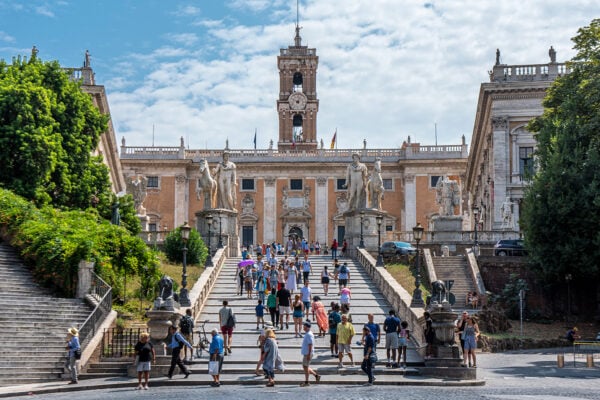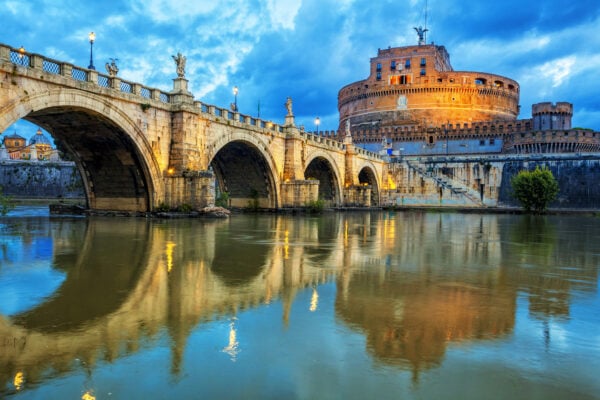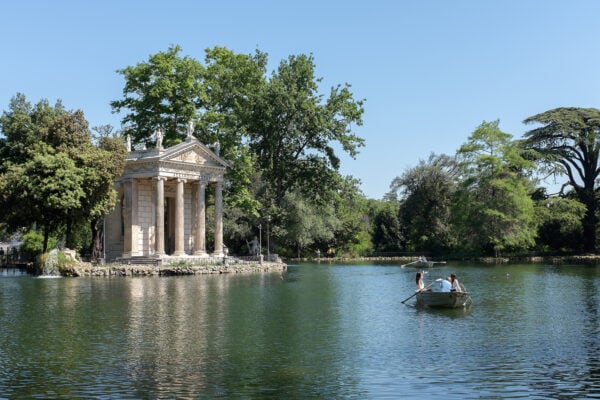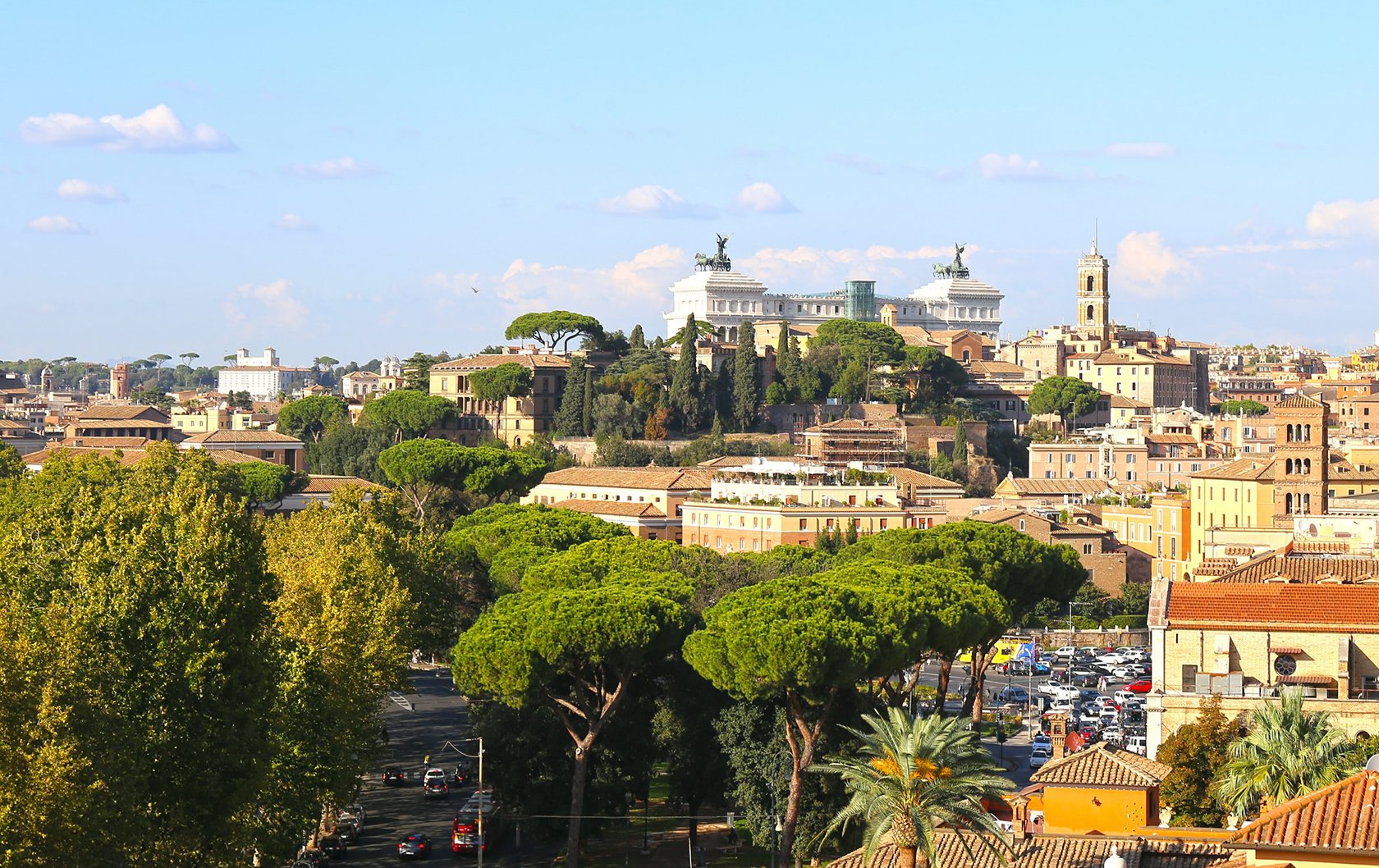
A walk exploring Rome with beautiful views (credit)
No matter how long you plan to spend in the Eternal City, no trip to Rome is complete without experiencing its most famous sights. You’ll undoubtedly want to visit iconic locations like the Vatican, the Colosseum, or the Forum and often, these are best done with the aide of a guide who will help unravel the incredible historical threads that these treasures contain. And while Rome may feel overwhelming at times, brimming with history, culture and buzzing scooters, sometimes the best way to experience it all is to set off on a walking tour at your own pace, with your own two feet to lead you as you set off exploring Rome.
Even if you have done a more extensive indoor or guided tour during the day, this leisurely walk is the perfect way to finish an afternoon as it is only about 1.5 km, or just under a mile, most of which is flat. You’ll start at the incredible Terme di Caracalla, pass through the imposing Circo Massimo and then finish the walk at the panoramic Giardino degli Aranci. If you time it just right, you’ll get to see sweeping views of Rome during the magic hour, when the setting sun glints off of the terracotta rooftops and glorious domes of the city. Whether you’re staying near the Colosseum or the Trevi Fountain, this historic walk will be one to remember.
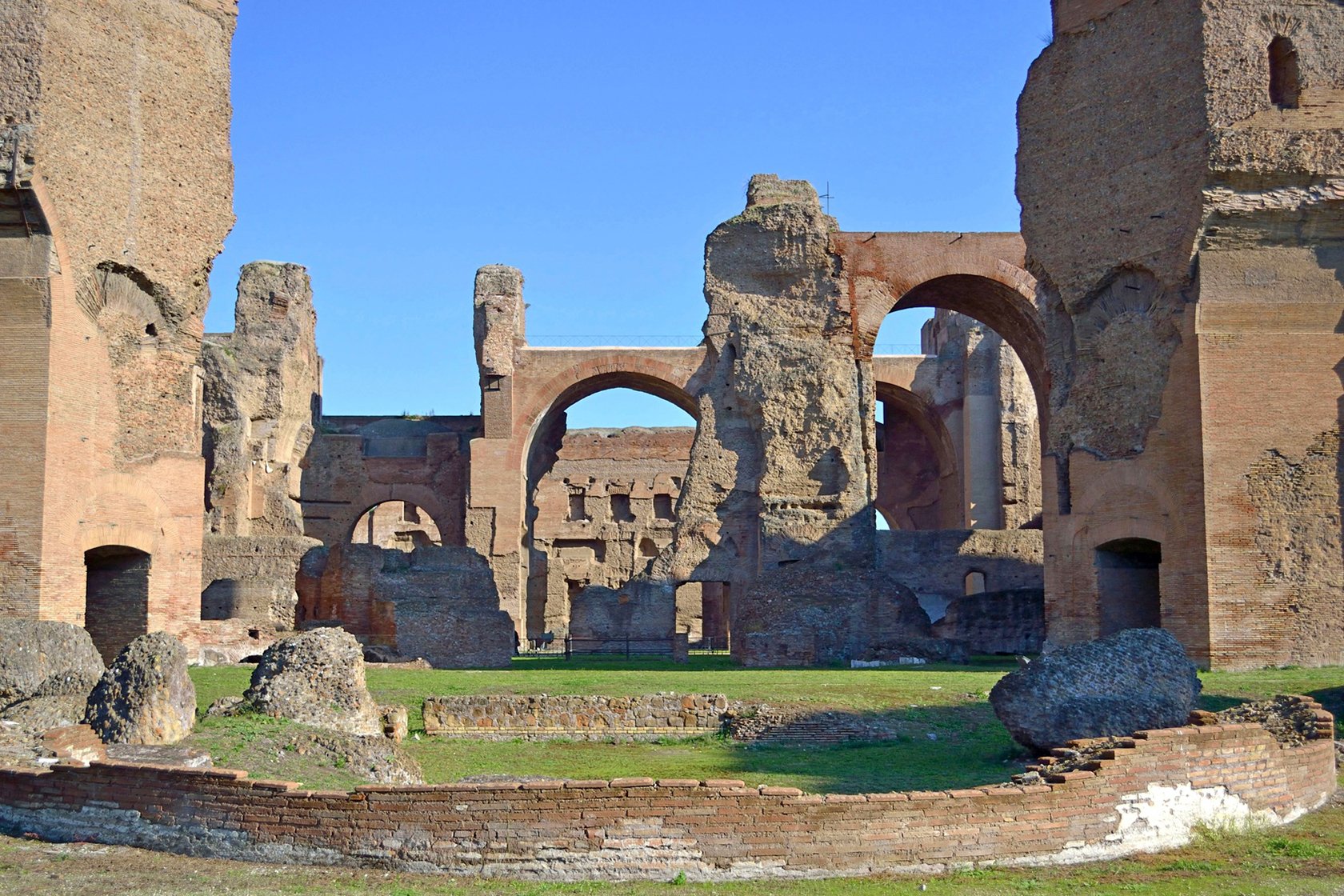
Exploring the Terme di Caracalla.
Terme di Caracalla – Rome’s Ancient Baths
You can take public transport to the Terme di Caracalla by using the Metro B and exiting at the Circo Massimo stop, or with bus number 714 that leaves from Termini Station. If you’d rather wait for the adventure to start once you’re on your walking tour, you can easily take a taxi or rideshare from anywhere in Central Rome and arrive there in under 15 minutes (traffic allowing, of course). If you’re already out and about and prefer to incorporate this walk into your promenade, it will be about a 15 minute walk from the Colosseum, heading south. Once you arrive, you’ll be greeted by the extraordinary ruins that give a particular insight into the daily life of Romans, that you might not see anywhere else.
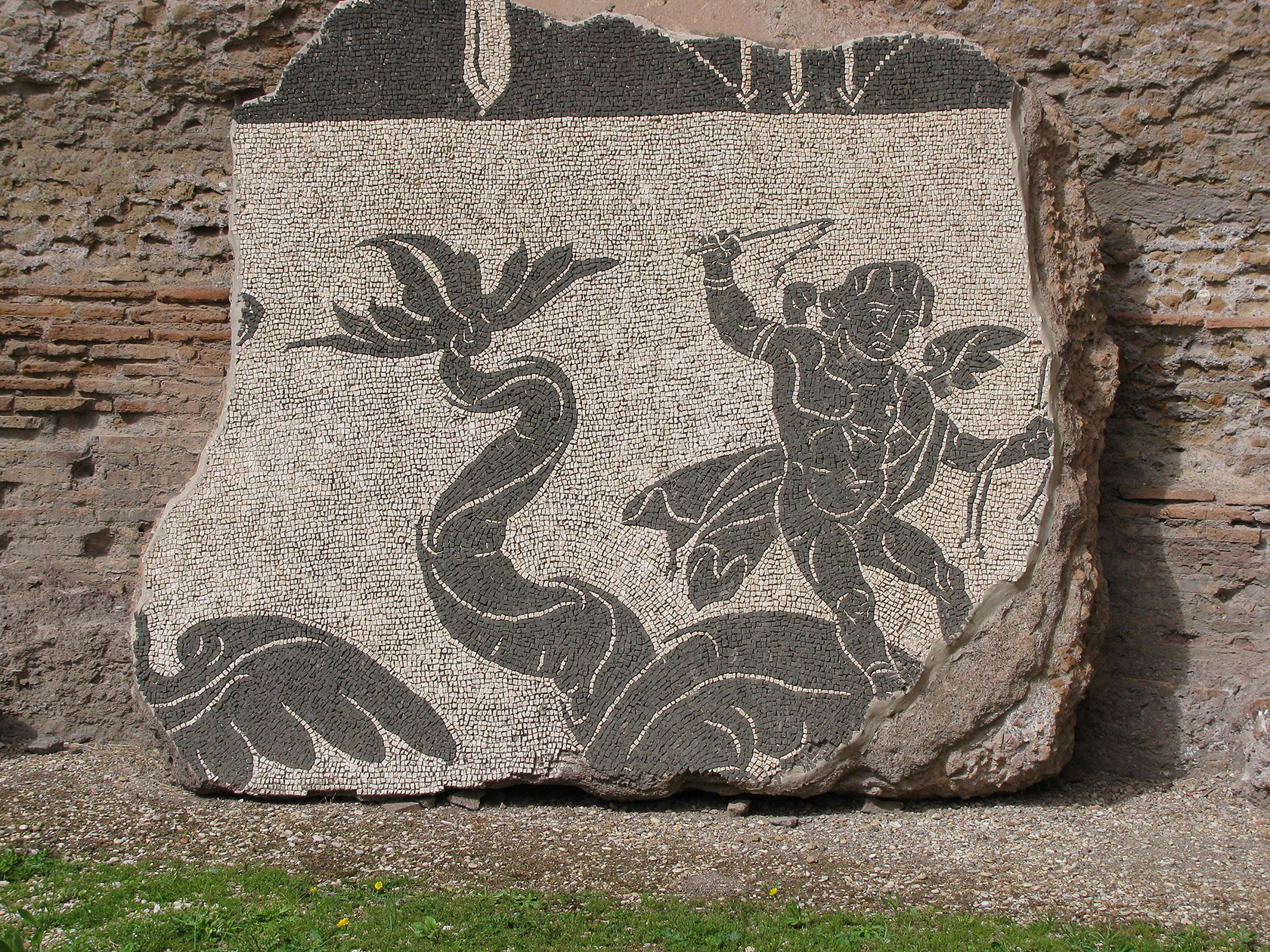
Mosaics at the Terme di Caracalla. (credit)
The public baths of Caracalla (terme being the Italian word for the thermal waters that are present in many parts of the country) were most likely constructed between 212-217 AD and were in use until somewhere around 530 AD. At one time,they were the city’s second largest Roman public baths and were referred to as one of the Seven Wonders of Rome. Indeed, the design of the baths served as an inspiration not only for similar structures but also for such sights as Union Station in Chicago and the original Penn Station in New York City.
Today the Terme is a popular tourist attraction but is notably less crowded than the Colosseum, though no less compelling. It is also a venue for concerts of all kinds, ranging from opera to jazz. You can content yourself with a stroll around the perimeter but it is worth it to enter the park where, for a small fee, you can get an audio guide or VR goggles that recreate the baths in their original glory. If you want a window into how the Romans really lived, there’s no better place than the Terme di Caracalla.
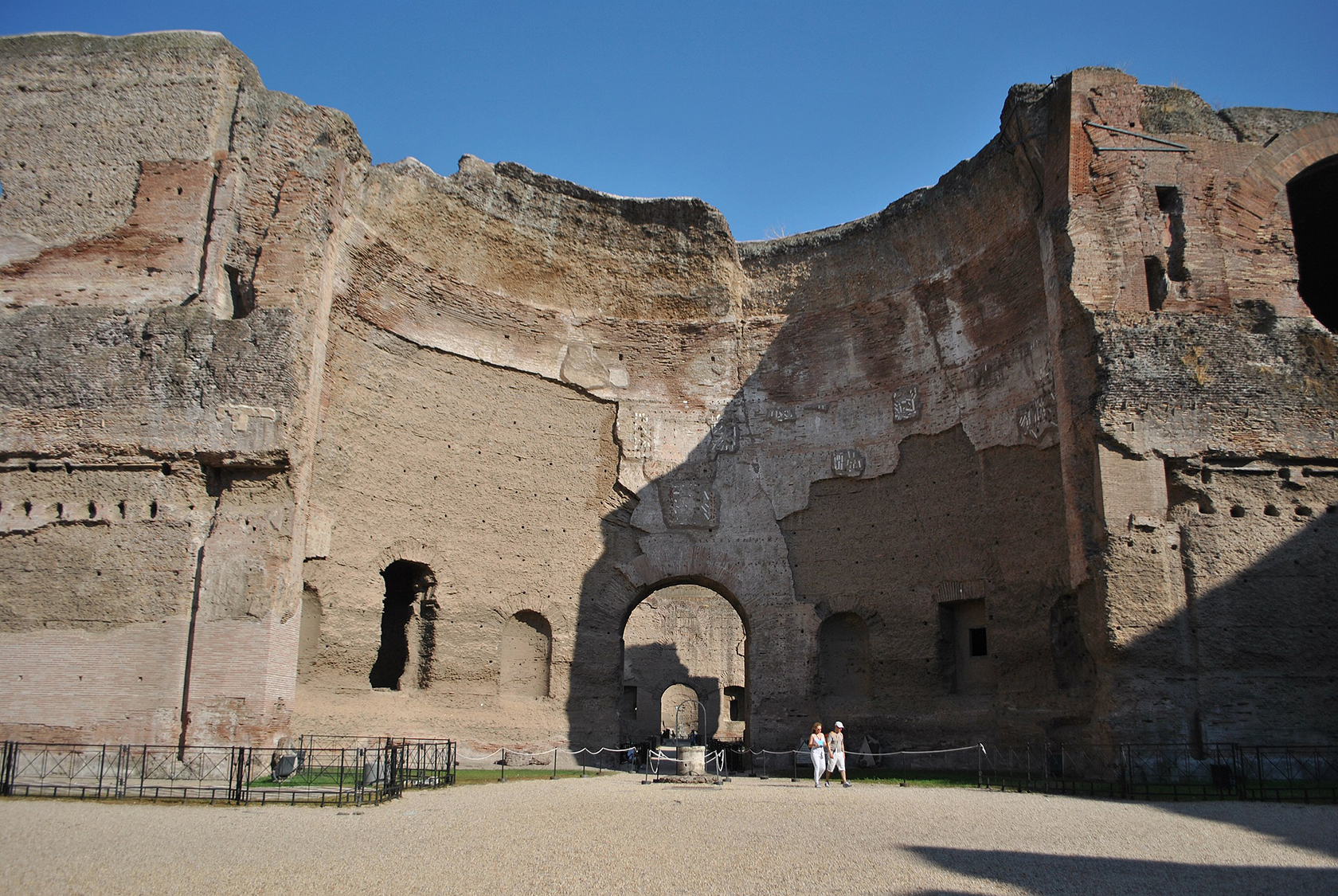
The impressive scale of the Roman baths. (credit)
Circo Massimo
Of course, as much as we can credit them with staggering feats of civil engineering, the ancient Romans played as hard as they worked. And before the Colosseum became the go-to spot for gladiators, there was the Circo Massimo or Circus Maximus. After departing the Terme complex, continue northeast along the wide, leafy Viale delle Terme di Caracalla until you reach the Viale Aventino, where you’ll find the entrance to the park that once held Rome’s largest and most storied events. The whole walk is about one kilometer or just over half a mile and should be quite a pleasant stroll along well-kept pedestrian paths.
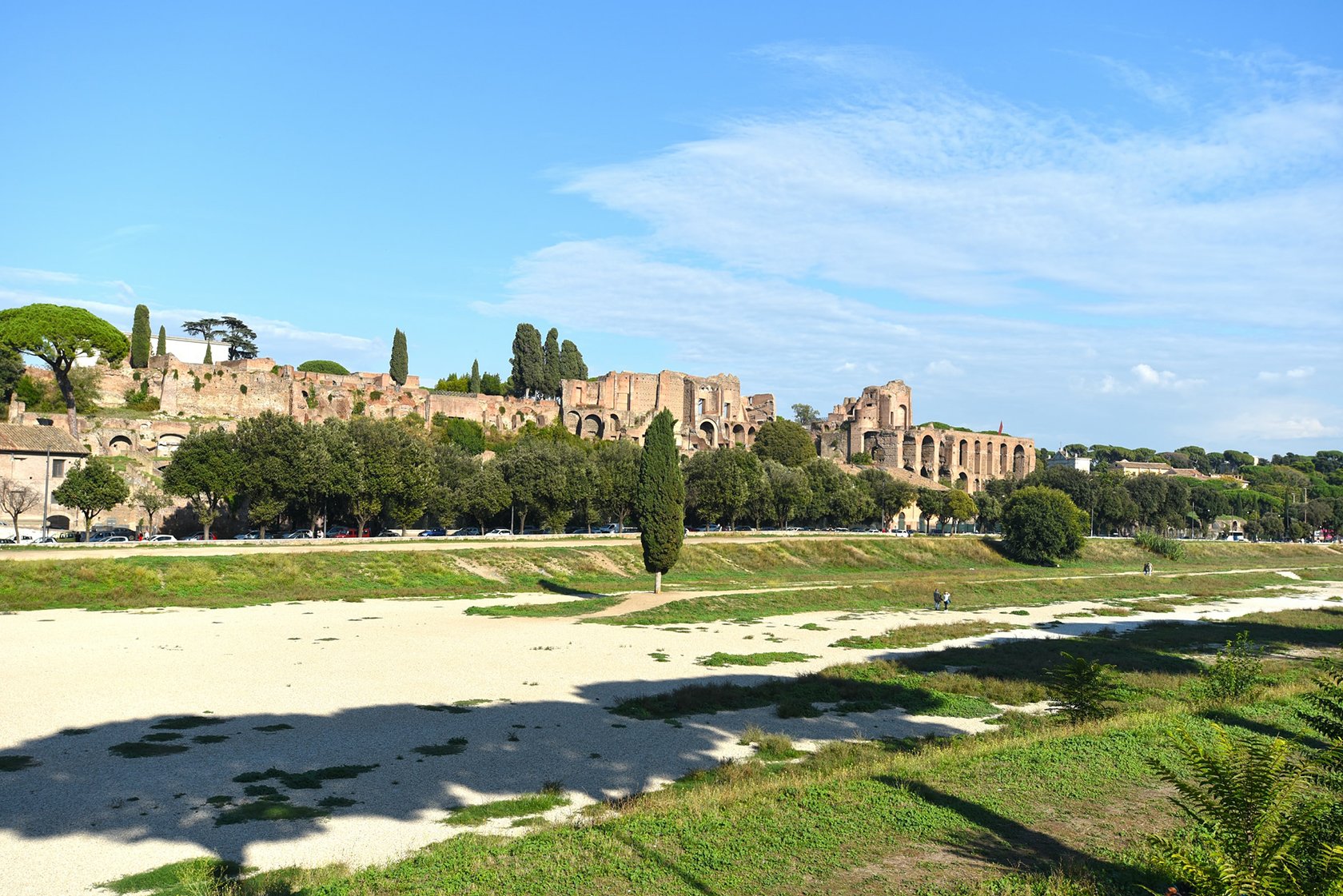
Walking along the Circo Massimo. (credit)
However, at over 600 meters long and 140 meters wide, walking to the Circus is really a matter of walking through the Circus. And why not? What was once a premium spot for chariot racing, gladiator games and an actual circus is today a beautiful and expansive green space in the middle of Rome, dotted with ruins from throughout the Empire. Because of several fires throughout the Roman period, the Circus Maximus was almost completely rebuilt under the Principate of Trajan (from 98-117 AD), and most of the structures that you’ll see today date from that period.
The Circus was the site of both great triumph as well as disasters in Ancient Rome, and visiting the area gives you a little window into the magnitude of that society as well as the lengths that its rulers would go to in order to keep people entertained. If you want to get a sense of just how expansive the area is, visit the medieval Torre della Moletta (built in the 12th century) within the park. An indoor staircase leads to a panoramic view over the archaeological area, where you fully appreciate the dimensions of the Circus.
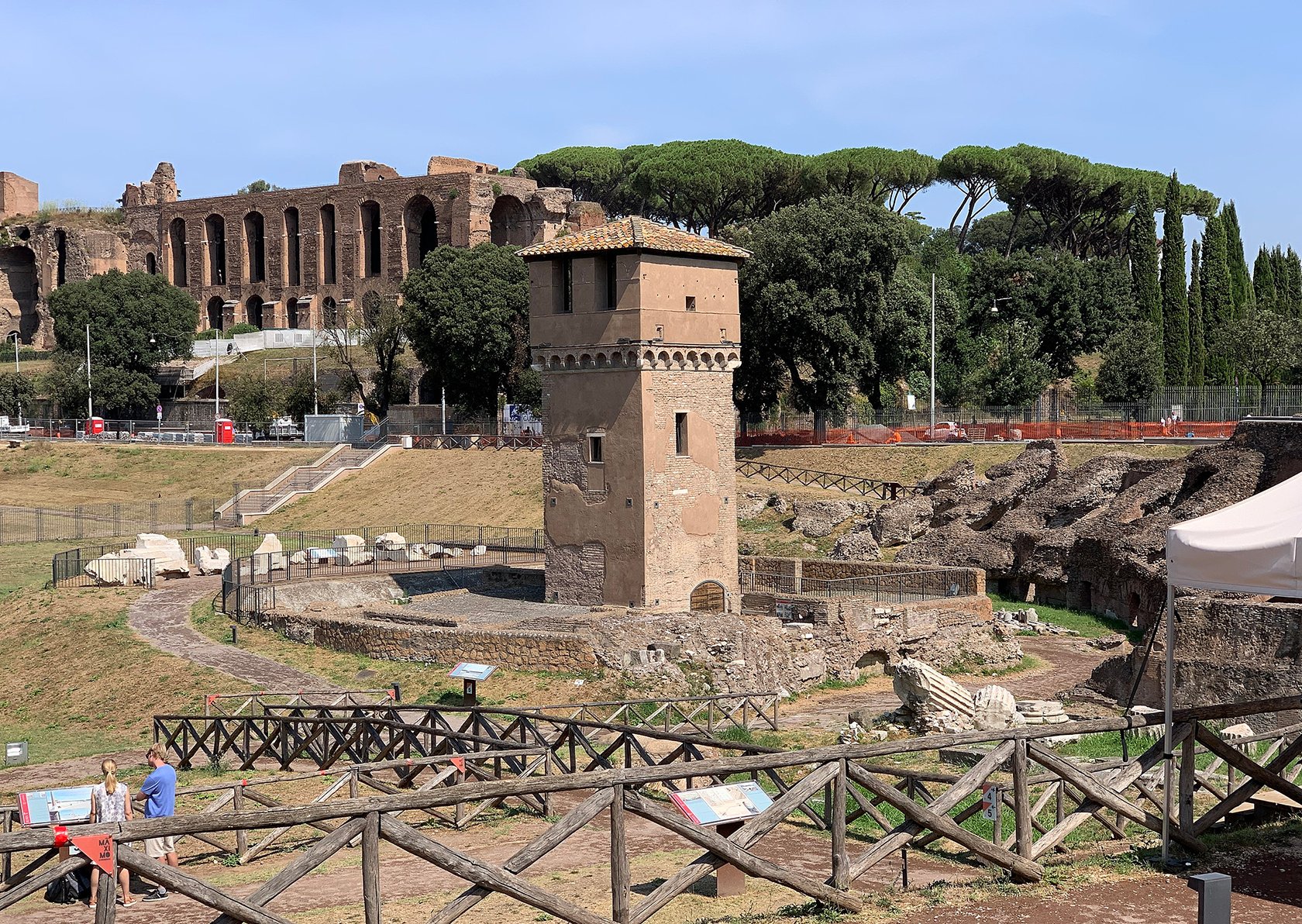
Ruins of the Circo Massimo. (credit)
Of course, if you want to learn more about the Circus and immerse yourself in its history, why not try the Circo Massimo Experience, an augmented and virtual reality tour within the park that brings you right back to Roman times. The walking itinerary has eight stops and takes approximately 40 minutes, and you’ll wander through all of the historical periods when the Circus was in operation. The experience is available in eight languages as well as for those who are hearing impaired or otherwise differently abled, and it runs throughout the spring and summer months. Doing the virtual reality experience at the Circo Massimo does require a bit more advanced planning, but if you happen to miss it on your walk its just another reason to come back!
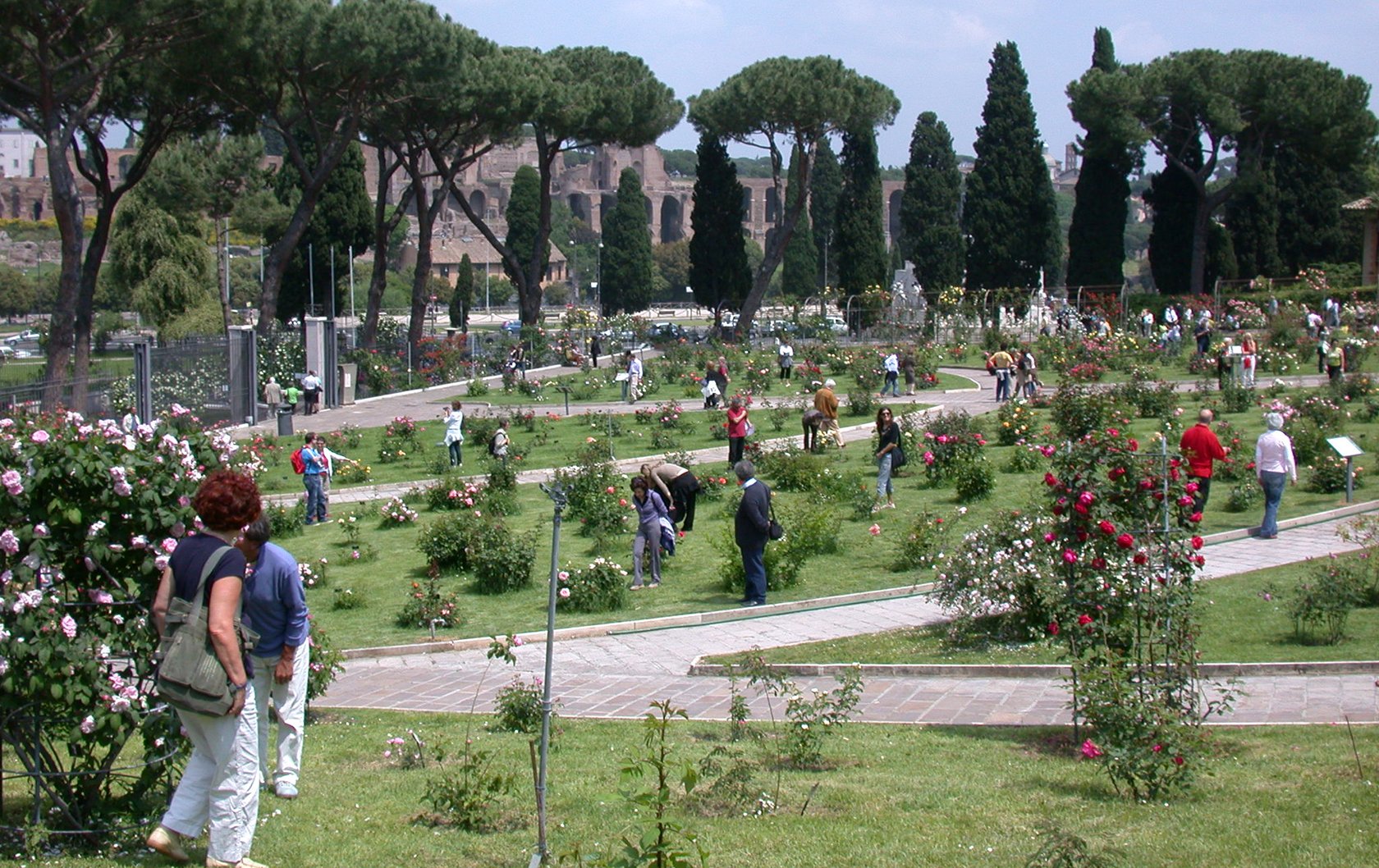
Rome’s beautiful rose garden. (credit)
Roseto di Rome and the Giardino degli Aranci
Once you’ve taken in the scene from the Belvedere Romolo e Remo within the Circus, head southeast towards Piazzale Ugo la Malfa and cross Via di Viale Murcia, where you’ll pass through the lovely Roseto di Roma Capitale, a monumental garden that contains over 1,100 species of Roses gifted to the city by dignitaries around the world. If your visit is during the flowering seasons in late spring or October, you’ll be hit by the distinct perfume of Roman roses and bursts of color from each side. Once you exit the garden you’ll have an ancient wall to your right as you continue on Via di Santa Sabina for another 300 meters. You’ll then turn right into the Parco Savello, more commonly known as the Giardino degli Aranci, or Orange Garden.
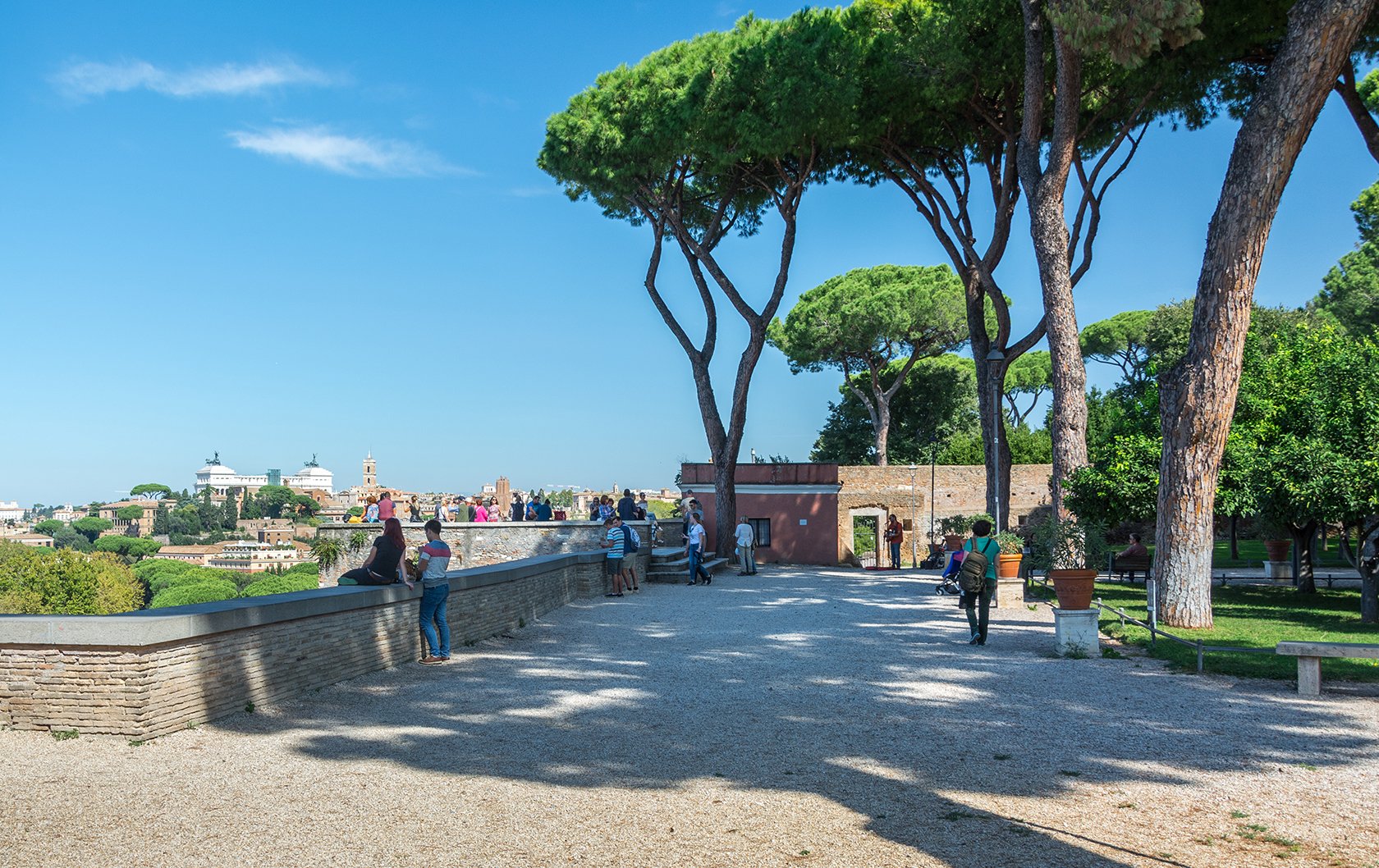
Gorgeous views await from the Giardino degli Aranci.
According to legend, Saint Dominic gave the garden its first orange tree after bringing a branch from Spain, and that same tree is still visible today. Whether true or not, the modern garden that we know today dates from 1932 and was designed by Raffaele di Vico, a landscape architect responsible for many of the most recognizable Roman parks. The garden itself is very symmetrical and naturally leads you to the outstanding view of the Roman skyline. It captures everything from the Tiber River to the Temples of the Forum Boarium, Santa Maria in Cosmedin to the Janiculum and St. Peter’s Dome.
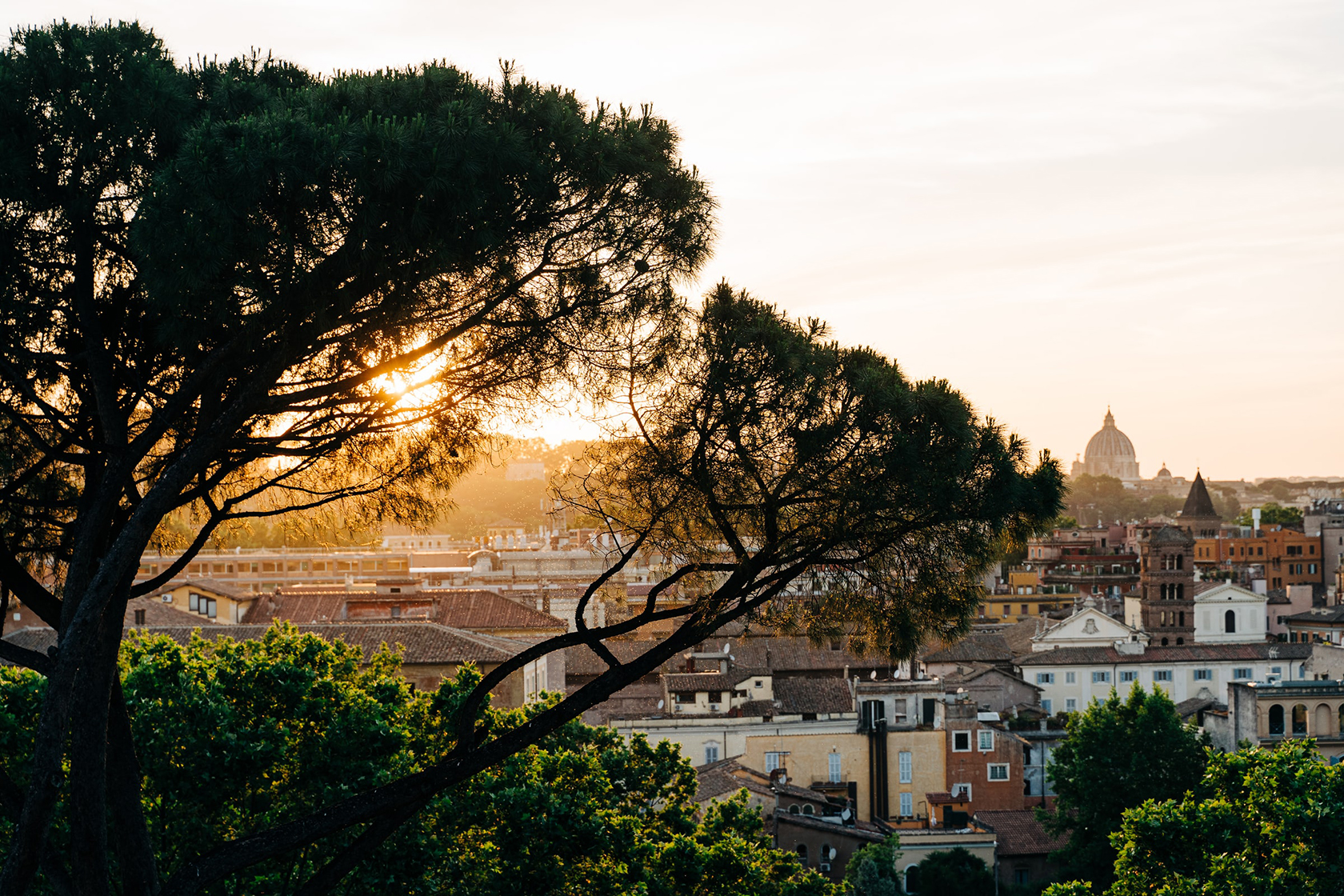
The golden hour from the Giardino degli Aranci. (credit)
Though it is less well known to tourists, the Giardino degli Aranci is one of the favorite spots for Romans to have a passeggiata in the late afternoon or early evening, just as the golden hour bathes the city in its signature light. Whether you’re visiting Rome for the first time or you’re a seasoned traveler, you’ll never forget this walk through a lesser known part of Roman history. Plus, you can reward yourself with a well earned aperitivo or gelato afterward!
Exploring Rome on Foot Tips
Wherever you walk in Rome, its always a good idea to make sure you’ve got comfortable shoes, a bottle of water and a light extra layer that you can put on or take off if you need to. Italians notoriously battle the colpa d’aria, a breeze on the back of the neck that they consider to be the source of a great many ills. Even if you’re in Italy in late spring or summer, you may see Italians walking with a light scarf on to avoid just such a fate. However, while it may seem superfluous at the time, its always a good idea to have something with you to cover up, especially if you take a walk at sunset. Temperatures often descend with the sun in Italy and besides, it’s a perfect thing to shop for while strolling through Rome during your trip!
